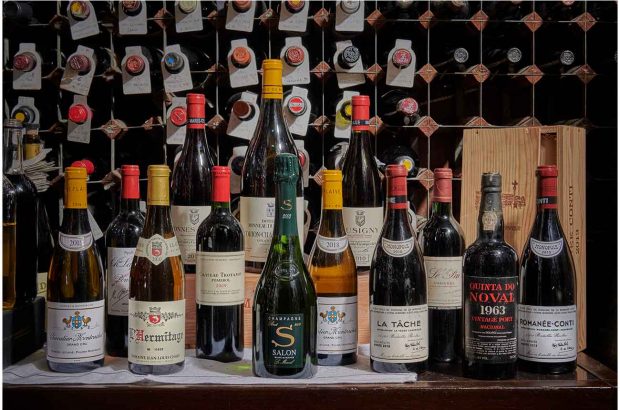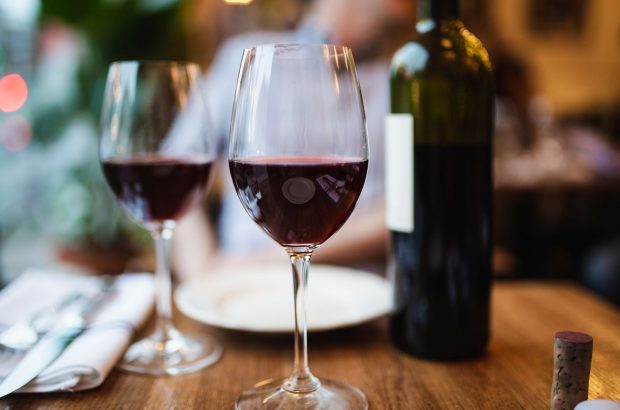William Kelley delves into the re-making of rosé wine in the US, looking at how styles have changed from the blush of yesteryear and picking out several wines worth drinking.
-
Scroll down to see William Kelley’s top California rosé wines
By now, it’s a familiar story: rosé wine is thriving in the United States. The cloyingly sweet blush wines of yesteryear may have lost market share, but sales of dry rosé have soared to unprecedented heights, enjoying double-digit growth and capturing the imaginations of millennial consumers.
What’s more, the dollar value of rosé sales have grown faster even than sales themselves. In fact, the rosé boom is biggest in the $15-$25 niche, whereas off-dry white Zinfandels still routinely retail for less than $5 per bottle.
Trends like this don’t go unnoticed, and there’s no shortage of new passengers on the rosé bandwagon. Celebrities have gotten on board, most famously Brad Pitt and Angelina Jolie with their Château Miraval in Provence.
So have powerful players in California: last year, Deutsch Family Wine & Spirits, which distributes Australian brand [yellow tail], debuted a rosé under their Josh Cellars label; and in March, wine titan Meiomi, recently acquired by Constellation Brands, launched its inaugural offering in the category, a Pinot Noir dominant blend.
Insatiable demand
Insatiable demand is driving supply. ‘We saw rosés from Provence hit the market earlier than ever before this year’, observes Larry Schaffer, who produces a superb Mourvèdre rosé in Santa Barbara under his Tercero label.
‘Even Bandol rosés, usually not slated for release until later in the year, are on the shelves already—which I suspect means that they’ll reach consumers before they’re showing their full potential’.
Indeed, despite retailers’ best efforts, some were already reporting dwindling stocks by the summer solstice.
‘In California, I think consumers are finally coming around to the versatility and pure enjoyment of dry rosé’ – Duncan Arnot Meyers, of Arnot-Roberts
What does all this mean for California rosé? It certainly spells success.
‘In California, I think consumers are finally coming around to the versatility and pure enjoyment of dry rosé’, says Duncan Arnot Meyers, winemaker and co-proprietor of Arnot-Roberts, a boutique winery in Healdsburg which has been making waves in the rosé world in recent years. ‘In short,’ he concludes, ‘California rosé is doing better than ever’.
As I reported last year, it’s also an especially dynamic genre in the Golden State. Whereas consumers have certain expectations of a California Cabernet, rosé offers more freedom to experiment with out-of-the-way appellations, eclectic grape varieties and different winemaking techniques: the necessity is not so much to ‘impress’ as to refresh. That makes rosé appealing to up-and-coming young winemakers and well-established stalwarts alike.
Continue reading below the wines
William Kelley’s favourite US rosé wines
Click on the wines for the full tasting note and for stockist details, including US stockists.
Bandol influence
The inspirations behind California’s rosé renaissance are various. Many producers look to Provence—and above all to the Bandol rosés of Domaine Tempier. Long championed by influential wine merchant Kermit Lynch and iconic Bay Area restaurants such as Alice Walter’s Chez Panisse and Judy Rodger’s Zuni Café, the Tempier wines have penetrated deeply into the consciousness of northern California winemakers. Morgan Twain Peterson’s Bedrock rosé is even named ‘Ode to Lulu’, in tribute to Lulu Peyraud, centenarian matriarch of the Tempier dynasty.
It’s clear that in just a few brief years rosé winemaking in California has become notably more accomplished
Others, like Jamie Kutch, nod to the more perfumed, tensile rosés of Sancerre and Burgundy, while Hélène Seillan’s crisp Cabernet Franc rosé hints at Chinon or Bourgeuil. Some winemakers, such as Turley Wine Cellars’ Tegan Passalacqua, are reinventing white Zinfandel for the twenty-first century.
And some are simply inspired by the place: Luke Russ, who grew up in Oakville, Napa Valley, discovered an overgrown patch of Pinot Noir in the heart of the famed To Kalon Vineyard. It’s now the source of one of the state’s most singular rosés, produced in minute quantities.
No longer an afterthought
But whatever their inspiration or varietal medium, it’s clear that in just a few brief years rosé winemaking in California has become notably more accomplished. ‘Rosé is actually an incredibly challenging wine to produce’, reflects Jamie Kutch, whose fragrant Pinot Noir rosé is one of the Golden State’s benchmarks: ‘it’s taken us a lot of work to get to where we are now’.
In the past, much California rosé was an afterthought: producers seeking greater concentration in their red wines would bleed off juice before fermentation; and instead of pouring it down the drain, some made rosé—a method known as saignée (though the name takes on different connotations in Champagne).
In balmy California, however, grapes picked for red wine seldom have sufficient acidity or low enough alcohol levels to make great pink wine.
Today, that method seems to be falling out of favour at the best addresses, as more and more winemakers pick grapes specifically for rosé, seeking out vineyard sites that retain high levels of natural acidity.
‘Early in my career I experimented with saignée rosé,’ says Kutch, ‘but I’ve come to think that it’s is a bi-product of wine and not in the same league as making a traditional-style rosé by whole-cluster pressing fruit’.
Anne Fogerty and Camille Gaio, who produce a sophisticatedly textural single vineyard rosé from Syrah, are similarly circumspect: ‘since we make a red from the same vineyard, we use a bit of saignée to complement the fruit we whole-cluster press’, they tell me.
‘It’s less than ten per cent and we ferment it separately—we always do trials before we use it. But it can lend a little bit of structure and depth to the blend’.
Such fastidiousness may seem out of sync with rosé’s modest price tag, but it’s typical of the attention to detail many producers now lavish on this humble drink.
‘We aren’t making it to get rich as you can’t charge very much for such a simple wine’, says Kutch. ‘We’re making it for the love of it and for the love of wine’. That attitude is widely shared; and it’s precisely what makes California’s best rosés so exciting.
More articles like this:

Rosé wines with food: Inspiration for great pairings
Premium rosé to match with good food...

‘Frosé’ cocktail – recipe
Try making your own 'frosé'...

Jefford on Monday: The rosé which wasn’t pink enough
The politics of wine colour...

Is pale rosé wine better quality? – ask Decanter
Always pick the lightest...?





